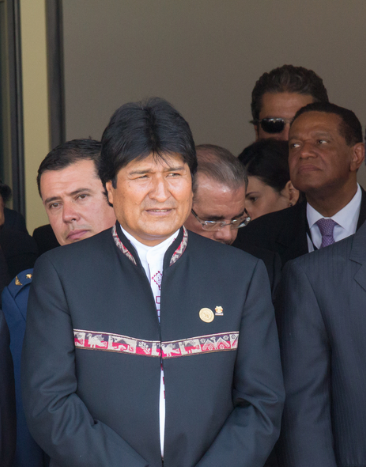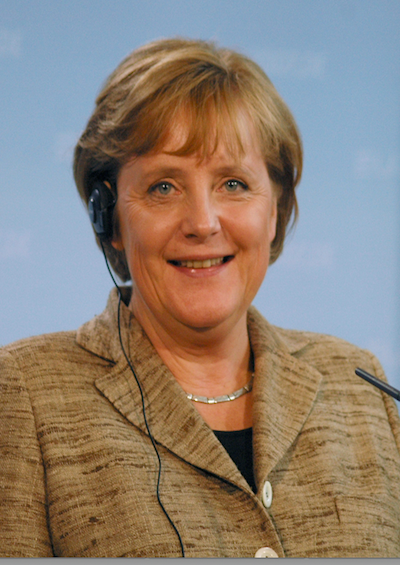Bolivia: Where Socialism Appears to Work
Bolivia’s remarkable example of advancing economic and social inclusion.
October 24, 2014

Bolivian President Evo Morales recently won re-election by a smashing margin. His eight-year rule has weakened the notion of property rights in Bolivia. He has also indulged in frequent nationalizations and demonized capitalism.
And yet, the Morales years have also produced Bolivia’s best growth rates in several decades, far better than those achieved when orthodox economic policies were pursued in the 1985-2003 period.
All of this must puzzle many elites around the globe. Thus, Morales’ recent policy of making Bolivian “clocks run backwards” seems reflected by the apparent successful defiance of theory in his economics.
In reality, though, there is a fairly simple explanation, and it is an important lesson for other poor countries no less than for global elites.
Nationalization as a budget balancer
His economic policies have a certain logic to them. Through nationalization and tearing up contracts, he has enabled the Bolivian state to quadruple its revenues from minerals and energy extraction.
Fortuitously for him and his nation, this occurred at a time when prices were high. So the big bucks arrived in his state coffers. Otherwise, mining and energy companies would have made those windfall profits.
This good timing on his part has enabled Morales to increase the Bolivian welfare state without drastically unbalancing the budget. Indeed, aided by the windfall in resource revenues, his budgetary policies have been a model of restraint.
Bolivia’s performance in that regard is far better than that of most other Latin American countries, or indeed than that of the rich nations of Europe, the United States or Japan. Purely judged on his budgetary policies, we might well envisage for Morales a post-Presidential career as the successor to the United States’ Jack Lew or the UK’s George Osborne!
The results of Bolivia’s economic policies have been excellent. An average growth rate of over 5% since Morales took office in 2006, with the 2008-09 recession survived with barely a hiccup.
With the budget so close to balance, Bolivia’s international debts are also modest, although a 2008 default on outstanding international bonds for a time made it difficult for the country to borrow. However in late 2012, the hyper-liquid state of global bond markets enabled Bolivia to borrow again, raising $500 million of ten-year money at a rate of only 4.875%.
This success is in marked contrast to the fate of the “neo-liberal” policies the country pursued from 1985 until 2003. During that period, while Bolivia ended hyperinflation, growth averaged only 3.1%, barely enough to keep up with the 2.3% annual population growth, and there were a number of grinding recessions.
It is thus a paradox for supporters of free market policies. How does it happen that Morales’ statist policies are rewarded with such success, whereas better policies pursued earlier brought results that were no more than mediocre?
Part of it is the effect of commodity prices described above and of Morales’ savvy and determined renegotiation of mining and energy contracts. Obviously, if commodity and energy prices are low during the next five years, Bolivia will have considerable difficulties.
In other countries where anti-market policies have been tried, such as Argentina, resource prices provide more or less the entire rationale for the country’s relative success.
Inclusion pays for itself
What truly sets Morales apart is this: As Bolivia’s first indigenous President, Morales has made great efforts to include the indigenous community – currently about 40% of Bolivia’s population – in the formal economy. He has provided them with both welfare payments and job preferences in order to increase their participation in the economy.
This parallels the policy of Brazil’s former President Luiz Inacio Lula da Silva. He also focused attention on the poorest members of Brazil’s very unequal society through the “Bolsa familia” program. It provides subsistence payments to the very poor – in return for keeping their children in school and other basic elements of economic participation.
Like Morales’ Bolivia, Lula’s Brazil enjoyed several years of unexpectedly robust growth before, alas, running into difficulty as the public sector continued to expand and suck up resources.
It therefore appears that – in situations where a large proportion of the population is so poor that it does not participate properly in the economy – it is possible to achieve a “growth dividend” by bringing them into full participation.
As they transition into full economic activity, their output allows the national economy to grow significantly, producing extra output and extra tax revenues, while enriching the economy as a whole – and not just the elites.
Lessons to be drawn
There are two lessons to be drawn. First, in Africa in particular, it will be necessary, as countries get richer, to put into place mechanisms that enable their poorer citizens to benefit from that progress.
This especially applies to countries like South Africa, with its exceptionally high level of inequality and an exceptionally corrupt state system that has managed to raise only a small number of its African fellow citizens out of poverty.
Indeed, the unexpectedly poor economic growth rates in South Africa can directly be linked to the lack of participation in the formal economy by its poorer citizens, as the country has 25% unemployment.
South Africa is twice as rich as Bolivia, in terms of GDP per capita, but it is also even more unequal, with a GINI index of 65 compared to Bolivia’s 47, according to World Bank data.
Capitalism requires equality
Second, even decently capitalist governments need to make sure that their market economies function smoothly right down the income scale. There is little benefit in having a national economy where the gains extend only to the top half of the income distribution.
When the bottom half of the population is mired in squalid shantytowns, with no opportunities of bettering themselves, a country is on the wrong track. Continued negligence is not advised.
In uplifting the very poorest, direct cash transfers with only simple conditionality are highly effective. A program such as the Bolsa Familia costs only a couple of percent of GDP – far less than massive infrastructure schemes.
Yet, it reaches the poorest in society effectively – and, unlike infrastructure projects it cannot be gamed by economic elites – via shady corruption deals that are often part and parcel of large-sized public investment projects.
History also suggests that the simplistic cash transfer approach to welfare works better. In Britain before 1834, the poor were given “outdoor relief” in the form of cash or food handouts and therefore remained active in the economy.
In 1834, the Poor Law invented the “workhouse” – by which the poor were segregated from the rest of society in an institution that was deliberately designed to be “less eligible” (and thoroughly unpleasant for its inmates).
That move was perhaps well intended, but it produced sharp exclusion, economically and socially – not inclusion. It disastrous legacy ultimately lasts to this day.
The lesson in all this is simple enough: Capitalism, in order to function well, needs to include the entire population. Relying on simple cash handouts and work opportunities, not elaborate and counterproductive social engineering, is the way to go.
Takeaways
The Morales years have also produced Bolivia's best growth rates in several decades.
Through nationalization, Morales quadrupled state revenues from minerals and energy extraction.
Purely judged on his budgetary policies, we might well envisage Morales as the successor to the US's Jack Lew.
Capitalism, in order to function well, needs to include the entire population.
